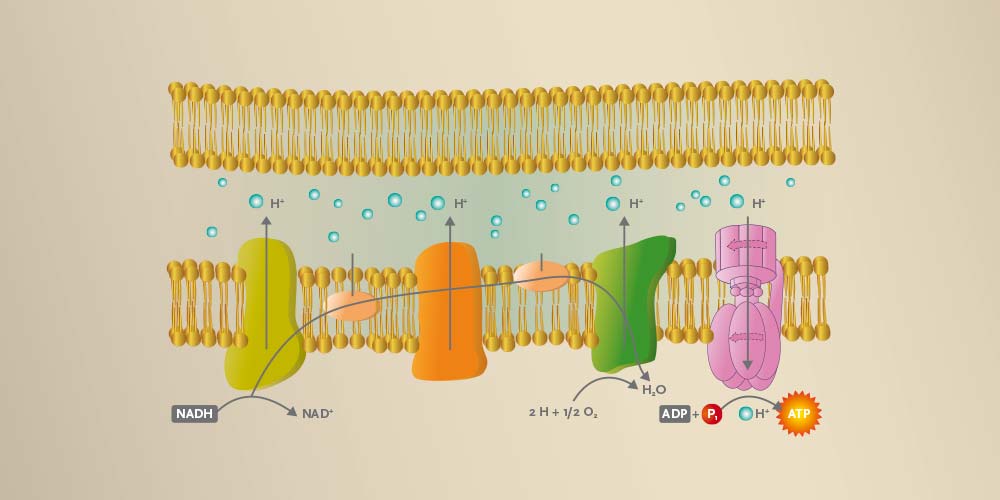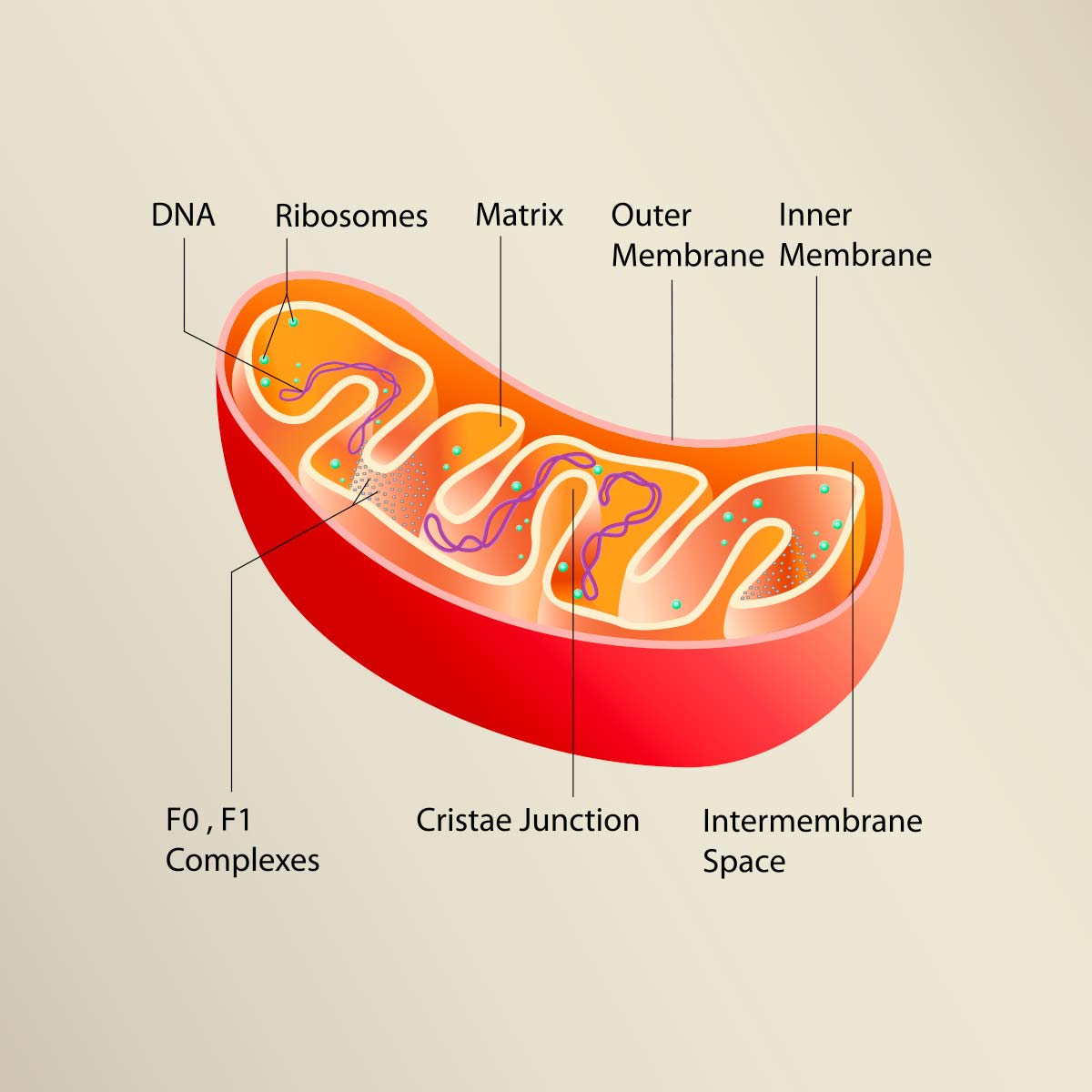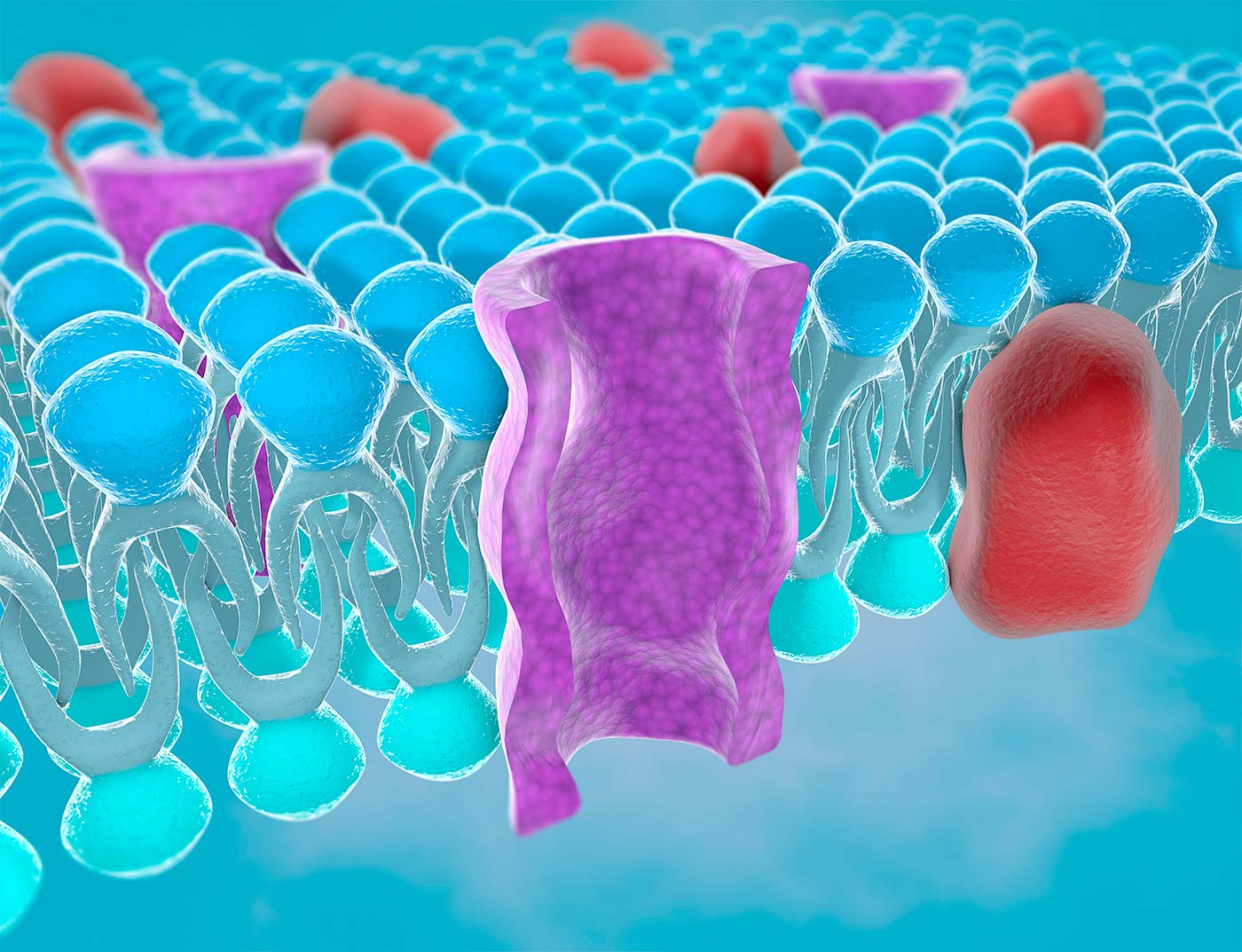
ATP (Adenosine Triphosphate) /
In biology ATP is considered to be the energy of life. ATP (adenosine triphosphate) is the “energy currency” of every cell in our body. It is the molecule with the most energy and most efficient for storing energy. ATP is produced in the mitochondria of our body cells.
Explanation ATP … >>>
The Mitochondria are the “energy power stations”, of our cells. Every day they produce the right quantity of ATP for our body weight. //
Example: 1 man who weighs 80 kg needs 80 kg of ATP per day.
Our whole energy supply depends on our body being able to produce enough ATP.
We constantly need energy for numerous metabolic processes, for cell repair and replacement etc. A considerable share of the energy we need each day is needed purely for maintaining our body temperature.

Mitochondria /
Mitochondria are cell organelles which work as “energy power stations” for the cells and are thus responsible for producing the energy for our bodies. They work for the cells to produce, store and distribute energy.
In each human cell there are up to 2,000 mitochondria, which produce the quantity of ATP (see above) necessary for our body weight every day.
Cells with high metabolism such as muscles and organs need more mitochondria.
Without mitochondria the cell becomes inoperative and dies.
Calcium ions /
Calcium ions are the most important messenger substance (neuro transmitter) within all body cells.
Outside the cell the concentration of calcium ions is 1,000 times higher than within the cells. If a cell is stimulated by an electric nerve impulse, a hormone or by a pulsating magnetic field then the openings in the cell’s membrane (ion channels) expand especially.
If these then open or their electrical conduction systems turns to “green” the calcium ions then flood the “lower-lying or calcium-less” regions in a flash and trigger off, depending on the cells, very different reactions.
- nerve impulses are sent to the working muscles
- hormones are released
- the activity of enzymes is increased (i.e. improved digestion)
- anti-inflammatory as well as anti-allergic effects (boosts the effectiveness of the immune system)
Cell membrane potential /
Description for the existing electrical potential difference between the inside of a cell and the extra cellular fluid separated by membranes (potential). The formation of a membrane potential is a characteristic of all cells. It has an important function for lots of biological processes. The membrane potential is especially important for nerve cells, muscle cells (muscles and muscular system) and sensory cells.

Energy Production /
With the pulsating electro-magnetic field treatment the energy production system (mitochondria) is stimulated, which usually only happens in situations where stamina is needed or in periods of heavy physical activity. Subsequently large quantities of ATP are created. The cells adjust to the new state of a pulsating electro-magnetic treatment within a few minutes and create after only 10 minutes which make the multiple demands on ATP for the ion pumps superfluous. The mitochondria however work for a much longer time and create a much greater quantity of energy.
